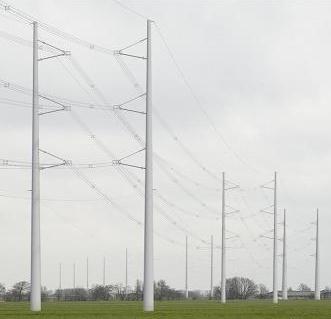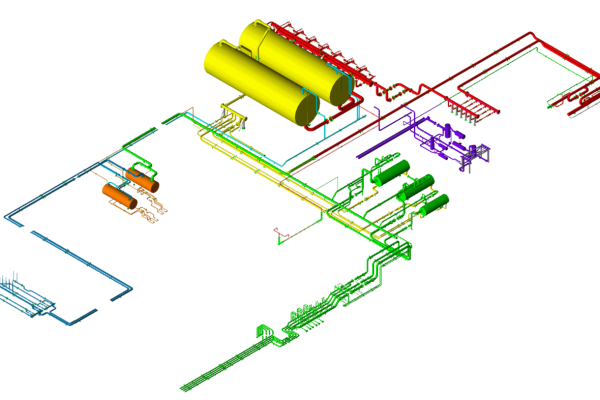Introduction
In this case, slender steel conical towers are designated to support high-tension wires, subjecting them to various horizontal and vertical load components. The load mechanisms encompass wind, mechanical tension in the wires, and additional local loads from clips affixed to the towers for supporting various accessories such as help rails, lightning protection wires, and guy wires.
The following load mechanism can be distinguished:
- Wind is an important load component both from a static and a dynamic perspective. The wind load acts directly on the tower but also indirectly through the high-tension wires.
- Loads by the mechanical tension in the high-tension wires. The tension wires produce local loads at the wire fixations but also exercise unbalanced loads on the towers at changes in the direction of the tension wire routing.
- Further, the towers will be loaded locally by various additional clips (some of them relatively highly loaded). The clips are welded to the tower to support help rails, lightning protection wires, and guy wires.

Notably, the presence of a required access door at the tower’s base, the highest loaded cross-section, adds complexity to the analysis.
Analysis
To assess the structural integrity of the tower under specified load cases, critical items and corresponding load conditions were identified. Static analyses were predominantly employed, except for the evaluation of wind impact, for which an analysis conforming to Eurocode 1 standards was conducted. This analysis accounted for the dynamic properties of the tower. Finite Element models were predominantly utilized in the analyses.
“The wind load acts directly on the tower but also indirectly through the high tension wires.”
Results
The calculations reveal that the access door portal of the tower necessitates substantial reinforcement to maintain local stresses below the acceptable material stress defined by the project parameters. Upon implementing the requisite reinforcement, subsequent calculations demonstrate satisfactory stress and deflection levels concerning the tower’s fitness under defined load conditions.






